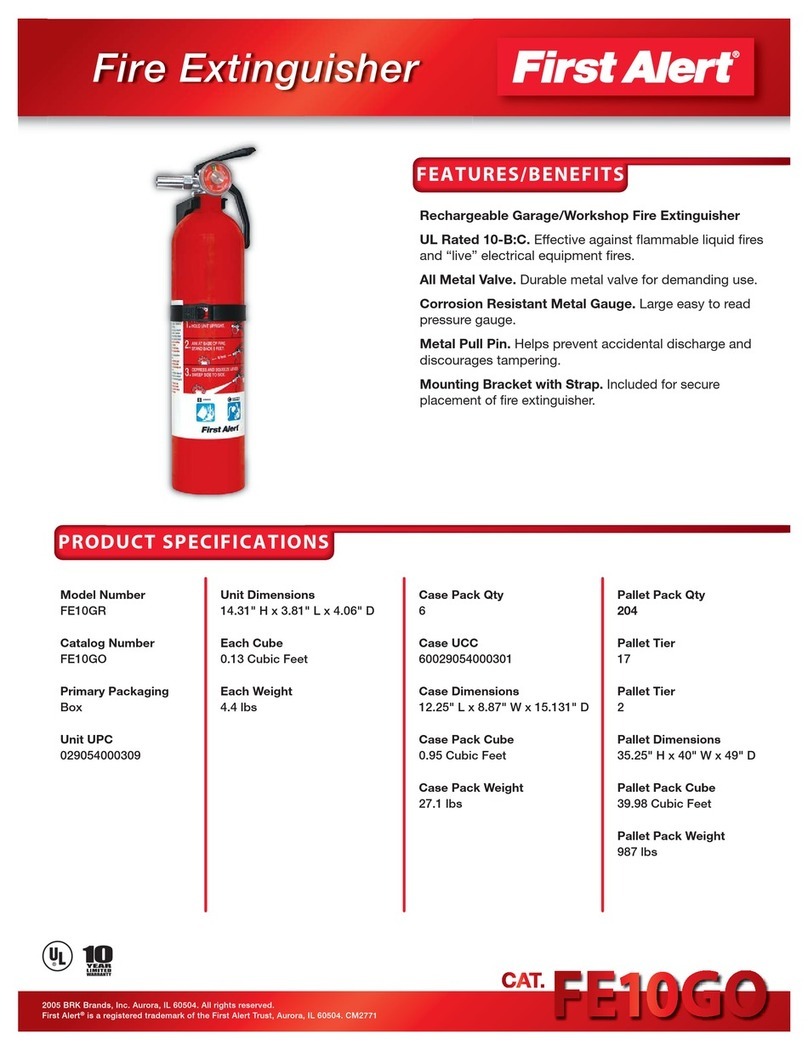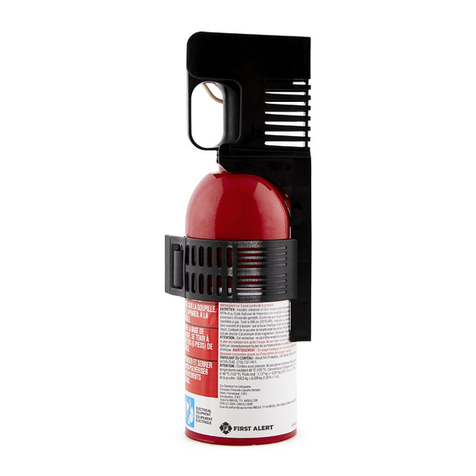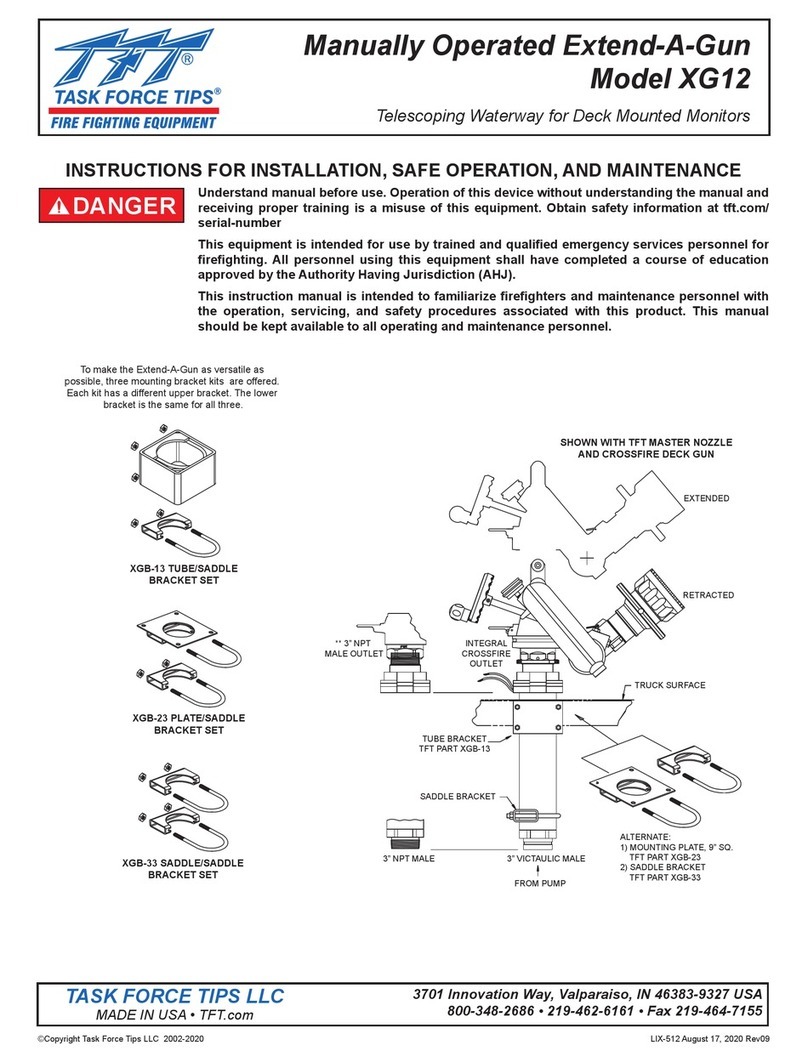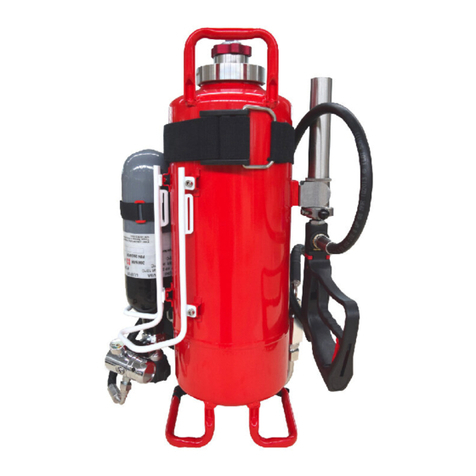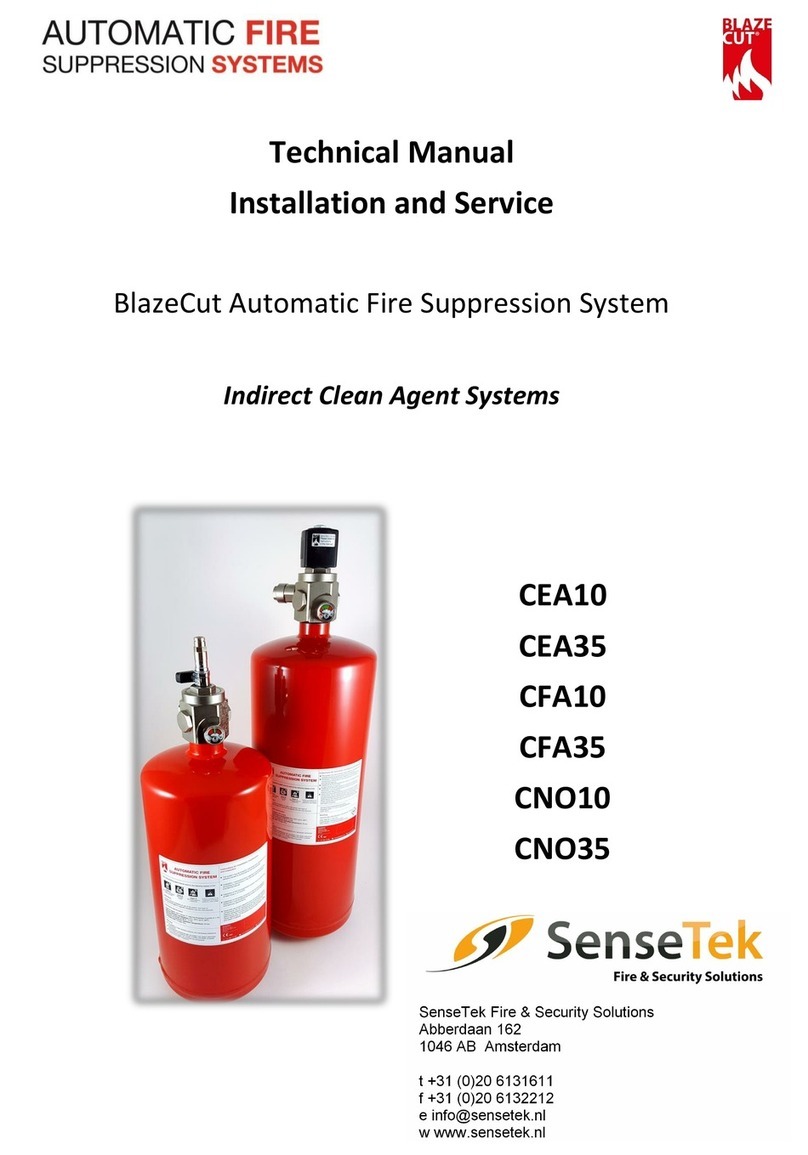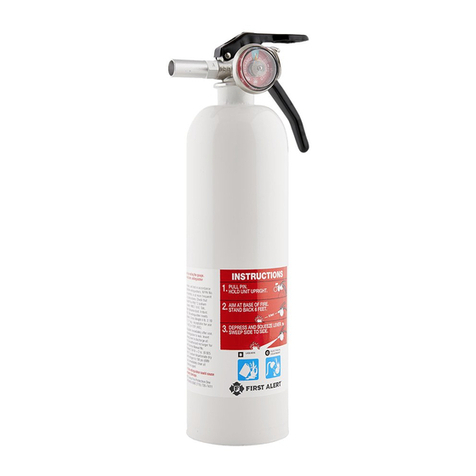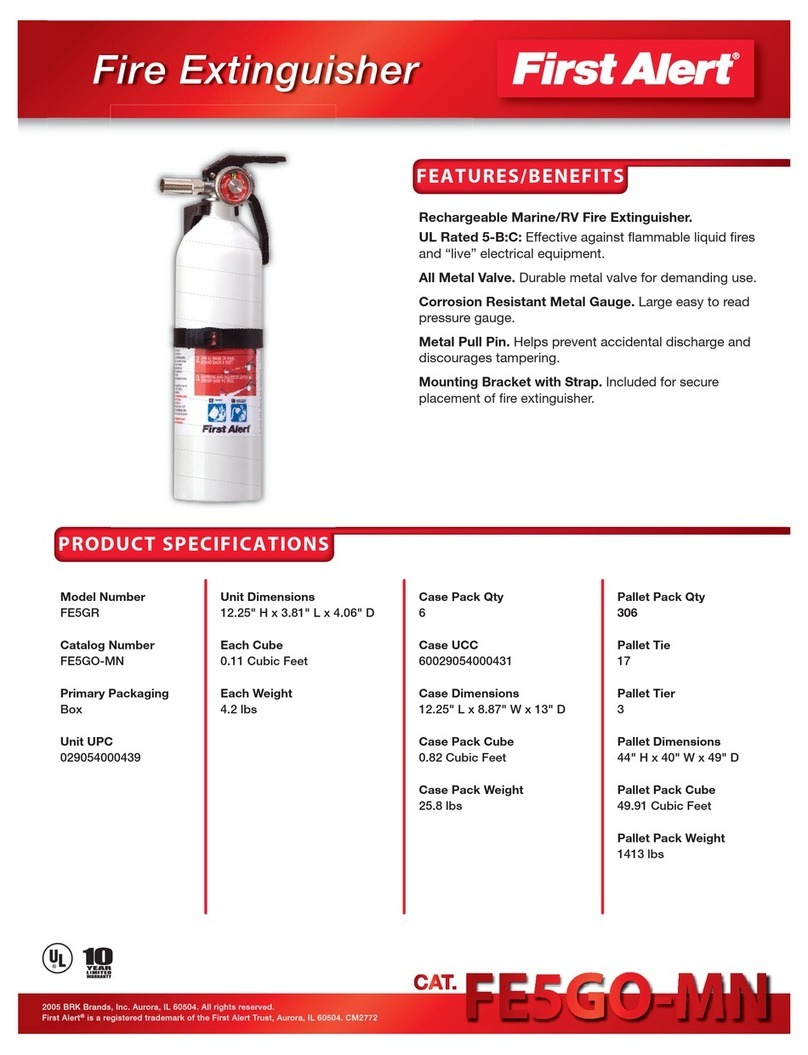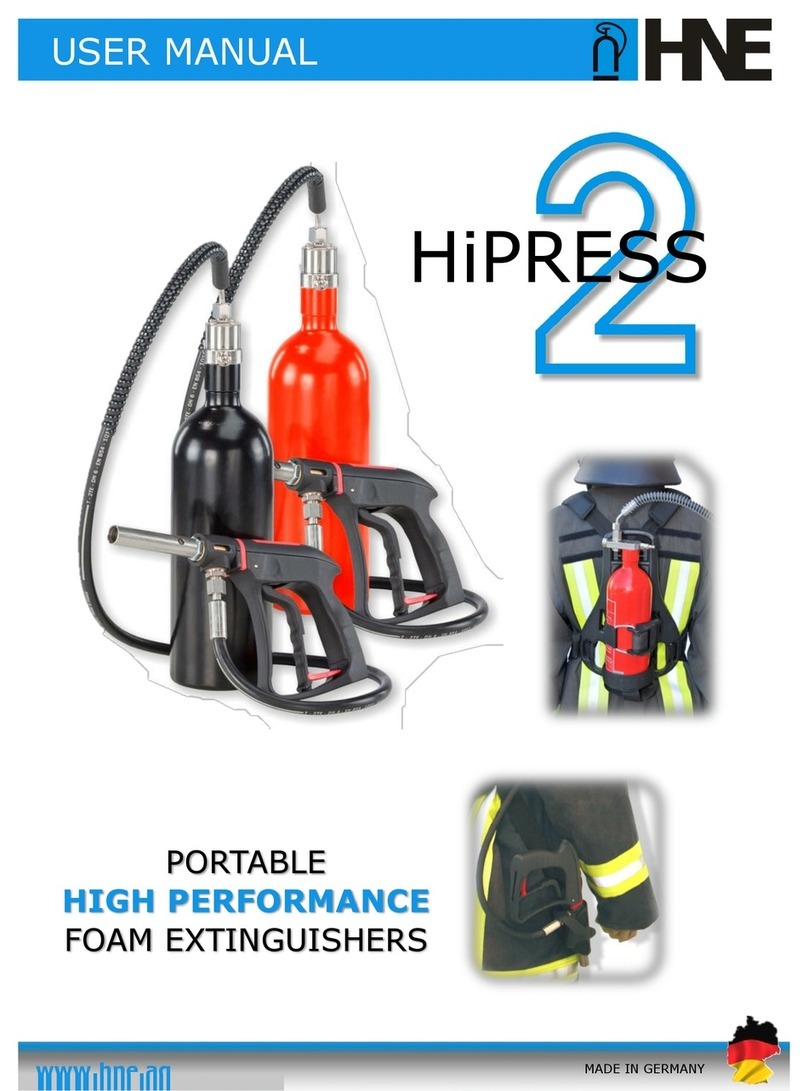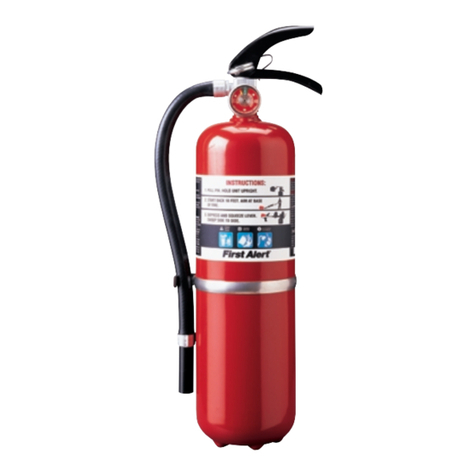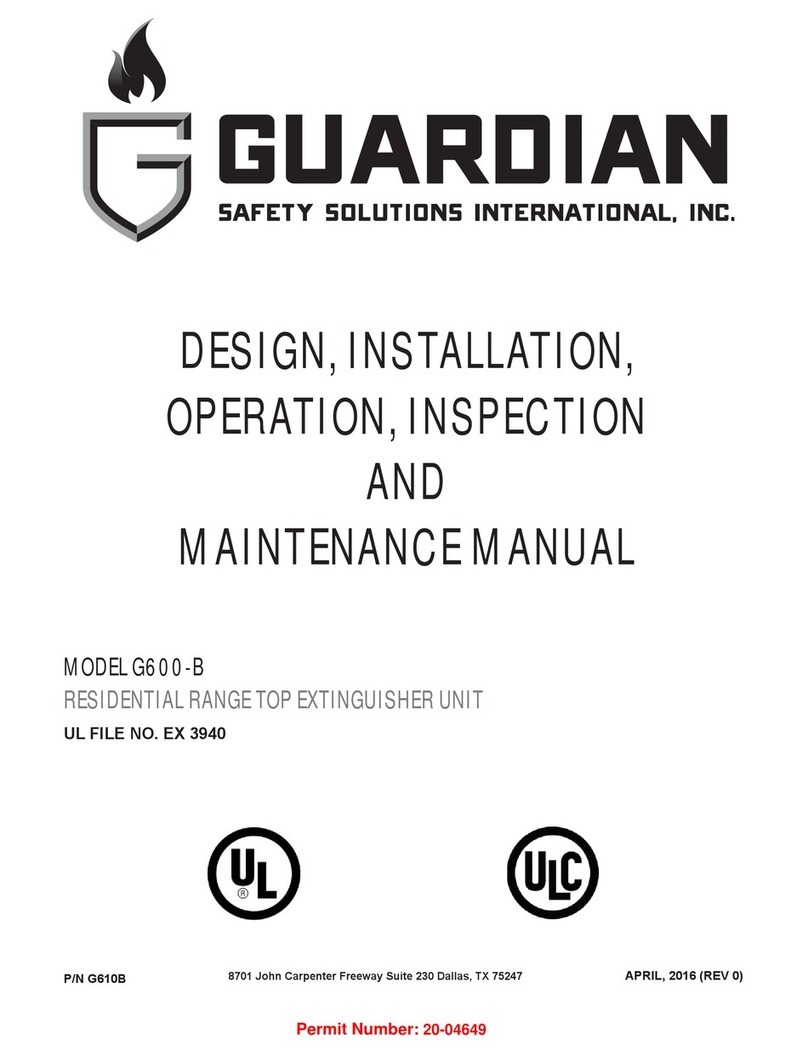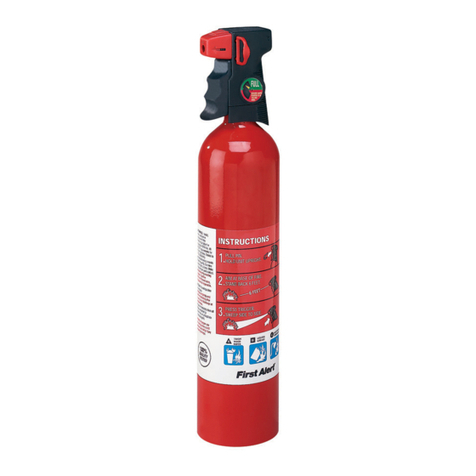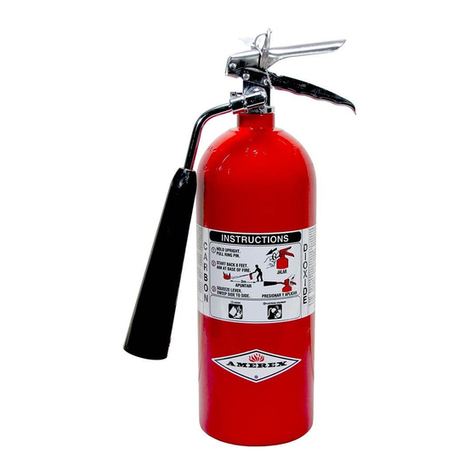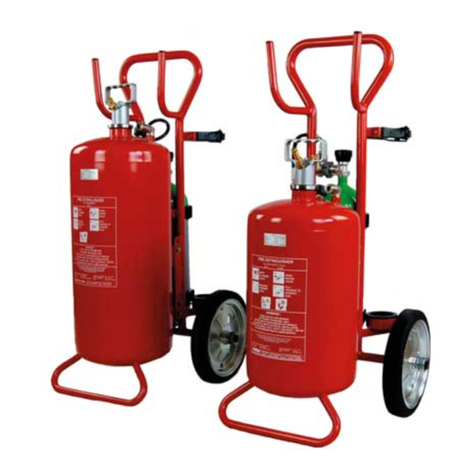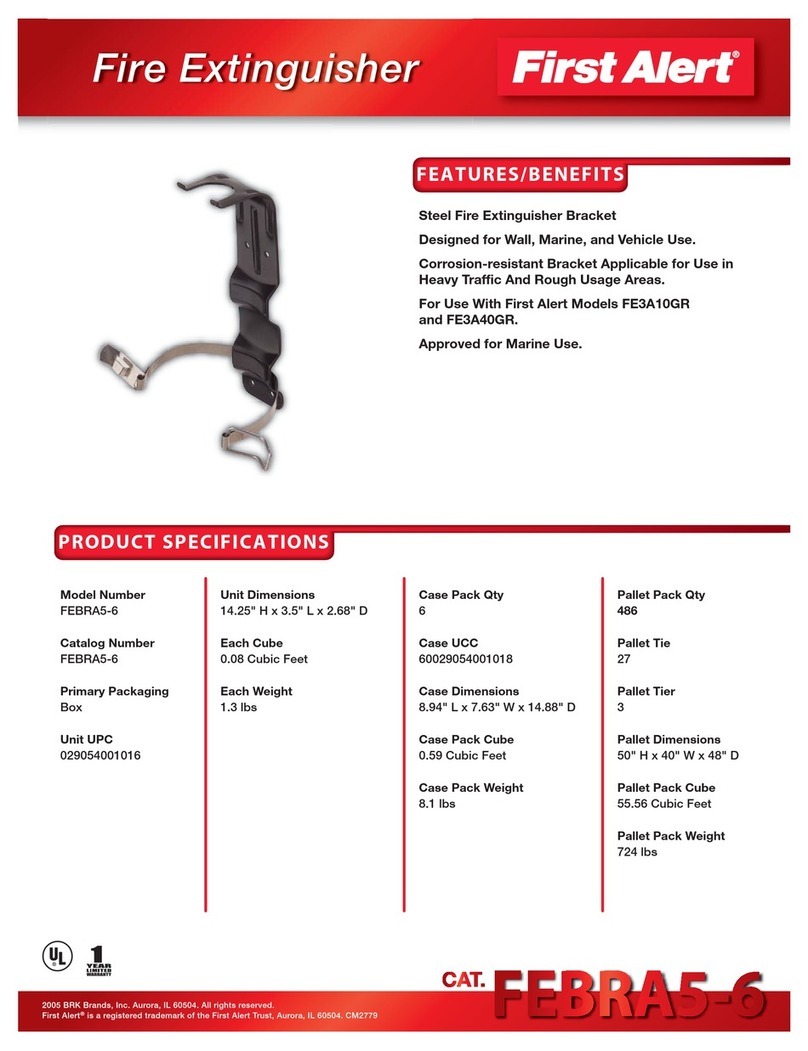
PN: 123-330, Rev. F Page 3of 52
Table of Contents
Warnings..........................................................................................................................2
Application.......................................................................................................................4
Limitations .......................................................................................................................5
System Operations ..........................................................................................................8
Supervisory Pressure Switch.......................................................................................9
Switch Specifications ..................................................................................................9
System Status Indicator Light Operation ....................................................................9
Pressure Relief Assembly (Burst Disk).......................................................................10
Interaction with Engines, Generators and Powered Ventilation (Blowers) ..............10
Diesel Engines or Generators, Powered Ventilation (Blowers) ................................11
Gasoline Engines or Generators ...............................................................................11
Relationship to Portable Fire Extinguishers ..............................................................11
Manual Discharge Capability ....................................................................................11
Installation.....................................................................................................................12
I. Cylinder Installation ...............................................................................................12
Wall Mounting ..........................................................................................................13
II. Cable Assembly Installation ..................................................................................15
Test Procedure..........................................................................................................19
III. System Status Indicator Light Installation............................................................23
Installation Requirements .............................................................................................25
System Maintenance / Inspection.................................................................................26
Cylinder Inspection / Cylinder Testing ......................................................................26
Agent Weight Inspection ..........................................................................................29
Pressure Gauge Inspection .......................................................................................30
Reading the Pressure Gauge (Inspection).................................................................30
Pressure vs. Temperature Graphs ............................................................................31
System Status Indicator Light Inspection..................................................................31
Glass Bulb (Temperature Sensor) Inspection............................................................31
Cable Inspection........................................................................................................32
Specification Tables ..................................................................................................32
Table 6: NFG - Automatic and Manual/Automatic Fire Suppression Systems .....32
Table 7A: NFD - Automatic and Manual/Automatic Fire Suppression Systems...33
Table 7B: NFD Automatic and Manual/Automatic Fire Suppression Systems .....35
Two Year NFG and NFD Series Limited Warranty..........................................................36
Conditions......................................................................................................................36
Additional Servicing .......................................................................................................37
Out of Warranty Replacements / Recharges.................................................................37
Safety Data Sheets.........................................................................................................38
Installation Inspection Checklist....................................................................................46
